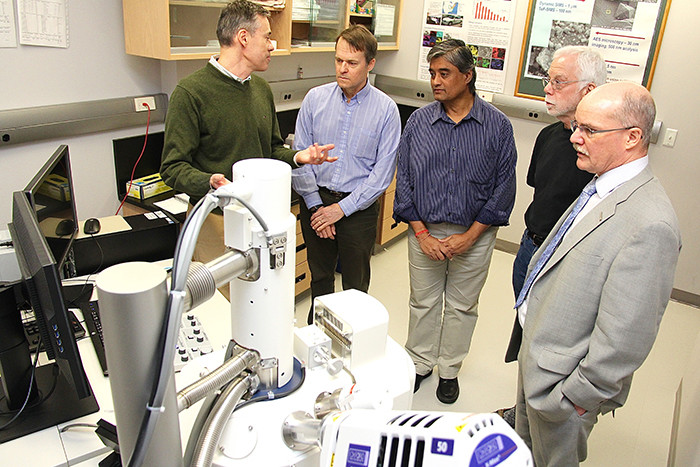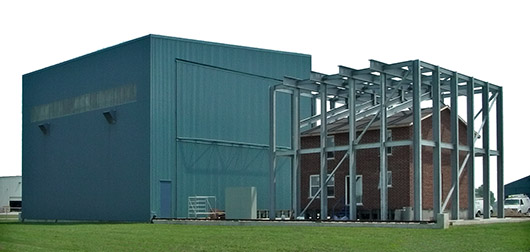Michael Bartlett
Contact
Professor
Department of Civil and Environmental Engineering
Spencer Engineering Building
Western University
mbartlet@uwo.ca
Special Projects
January 2016 - Western News
Researchers investigating Nipigon River Bridge failure

The Ontario Ministry of Transportation (MTO) has sought the expertise of Surface Science Western (SSW) and the Faculty of Engineering to conduct testing of the bolts from the Nipigon River Bridge. On Jan. 10, the decking on the newly built $106-million bridge lifted about 60 cm, forcing a 17-hour shutdown and closing the Trans-Canada Highway link between the east and west. One lane of the bridge has since been re-opened.
Western team members, including, from left, Brad Kobe, SSW Research Scientist; Robert Klassen, Mechanical and Materials Engineering professor; Sridhar Ramamurthy, SSW Senior Research Scientist; David Shoesmith, SSW Director and Chemistry professor; and Mike Bartlett, Civil and Environmental Engineering professor, are undertaking an independent examination of the bolts. The bolts will be examined visually first, followed by chemical analysis, a determination of the nature of the failure, a confirmation of the mechanical properties of the bolts, as well as a comparison of the bolts to design specifications.
Insurance Research Lab for Better Homes
The Insurance Research Lab for Better Homes is a multi-million dollar state of the art research facility built to examine all aspects of house construction by performing novel experiments on extreme wind effects, moisture penetration, energy efficiency and mould growth. It is the first of its kind in the world!

The ultimate aim of our research is to improve construction techniques to make our communities more resilient to natural hazards and more energy efficient in the coming decades.
The Insurance Research Lab for Better Homes brings, for the first time anywhere, the application of realistically simulated time and spatially varying wind loads to full-scale houses and light-frame structures including sheet steel buildings, in a controlled manner, up to failure. This allows an assessment of the integrity of the overall structure of the building, the pathways by which the load is transmitted through the structure to the ground and the performance of individual building components as part of the whole construction. Information on human error during the construction process is collected and its impact on the potential damage and failure is analyzed.
The facility can be used to assess the factors influencing the ingress of moisture due to wind-driven rain and the development of harmful mould growth under realistic environmental conditions. Simulated snow loading can be investigated as well.
Oral History Interviews to Preserve Canadian Engineering Achievements
This two-year project (2020-21), with a budget of $45,000, retained Western Masters of Arts in Public History Interns to research, conduct, transcribe, disseminate and archive 28 interviews of prominent engineering Narrators. Dr. Bartlett drafted application to Western’s Non-Medical Ethics Review Board (approved, 25 November 2020), Mitacs matching funds (approved, 29 March 2021), and edited and close-captioned the interview videos. See https://digitalcollections.library.ontariotechu.ca/node/7

